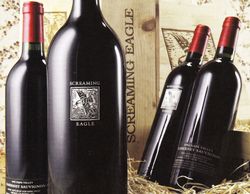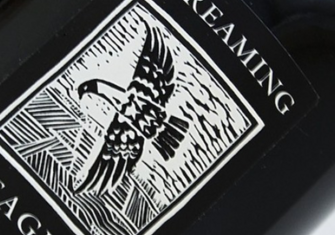
The iconic Screaming Eagle enjoys the special aura and phenomenon of the super rare Californian cult Cabernets with tiny production and tightly held distribution. Benefiting from the perception that you have to be a ‘special insider’ to gain access to these rare wines, valuations achieved by Screaming Eagle have been record breaking.
It all began when former Napa Valley real estate agent, Jean Phillips, acquired the 57-acre vineyard in Oakville in 1986. The original estate was planted to a number of varietals, the fruit of which were supplied to other Napa vineyards for wine-making, except for one special acre on which approximately 80 Cabernet Sauvignon vines had been established. Phillips sought help from the Robert Mondavi Winery which resulted in the inspirational introduction to the up-and-coming Napa winemaker of the moment, Heidi Peterson-Barrett.
Phillips and Barrett worked together to improve the vineyard and in 1992 produced about 500 cases of pure Cabernet Sauvignon wine from this special block of grapes, which Phillips named ‘ Screaming Eagle’. They replanted the vineyard in 1995 to include just three Bordeaux grape types; Cabernet Sauvignon, Cabernet Franc and Merlot.
The first commercial vintage – the iconic 1992 – was scored by Robert Parker Jnr at a near perfect 99 points when the wine was released in 1996, causing a huge sensation and making a ‘winemaker star’ of Heidi Barrett. Parker’s rating of a near perfect score for a first vintage elevated Screaming Eagle to join a tiny elite group of ‘Californian cult wines’. Over the next decade it became the most iconic Californian fine wine brand with the estate’s wines were selling at prices similar to the top Burgundies.
Phillips accepted ‘an offer she couldn’t refuse’ from a joint venture between Charles Banks and billionaire Stan Kroenke (owner of Arsenal FC) in 2006 for an estimated US$30million and in 2009 Kroenke acquired Banks’ share in Screaming Eagle and he is now sole owner.
The Screaming Eagle estate now produces three wines, the signature 100 per cent Cabernet Sauvignon, Screaming Eagle with approximately 500 cases made per vintage. Second Flight uses the grapes that do not have the quality for the first wine and the blend tends to be Merlot based. The resultant ‘lighter wine’ is still consistently very highly scored and valued. Kroenke also introduced the production of an ‘uber-rare’ Sauvignon Blanc which is sold only to long time members of the Screaming Eagle distribution list.
Screaming Eagle distributes its wines through a registered list of subscribers and wine lovers can wait years to get on the winery’s mailing list. Due to the very small production levels Screaming Eagle is rarely available on the open market and it tends to be the most expensive Californian wine. Release prices to members may be over US$300 per bottle and subsequent secondary market values can be much higher.

Some Screaming Eagle vintages have sold at auction for over US$4,000 per 75cl bottle. A 6-litre bottle of the inaugural 1992 vintage was sold at the 2000 Napa Valley Auction for US$500,000. No doubt the Auction’s charitable focus will have added impetus but this is still an extraordinary sum of money. The 2007, 2008 and 2009 vintages are known to have sold to subscribers for about US$850 per 75cl bottle and subsequently between US$2,000 to $3,000 per bottle on secondary market, primarily in the US. A 75cl bottle of the 1992 vintage was available for sale in Spring 2018 for US$9,000 and Screaming Eagle wines sold at auction now can command six figures.
The recently launched Liv-ex California 50 comprises the last ten physical vintages of the most actively traded Californian fine wines; Screaming Eagle, Opus One, Dominus, Harlan Estate and Ridge Monte Bello. Performance retrospectively reviewed from 2003 sees the California 50’s performance as slightly lower than Liv-ex’s Bordeaux based indices with less volatility, but this should come as no surprise given the relative youth of Californian wine brands and their rare availability in the secondary market. In the short term however their performance is compelling with the California 50 seeing 15.8% growth since July 2017, in contrast to the Liv-ex 50, which tracks the performance of the Bordeaux First Growths, and a comparative 5.2% uplift over the same period.
Diversifying fine wine investment portfolios into the wines of other regions is an important component of our wine selection strategy and portfolio planning with clients. For further information please contact us on 0203 384 2262 and view our ‘Buy Recommendation’ note on Screaming Eagle 2015.

